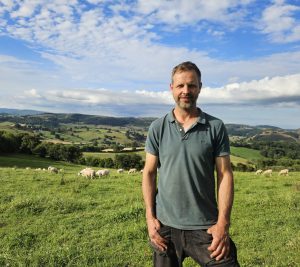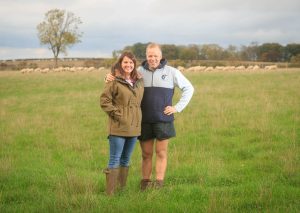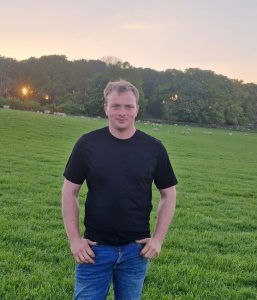with thanks to Steve Morris and family, Goodshaw Farm.

Sheep farming has a firm future in marginal and upland regions, however producers will need to become more efficient by exploring best suited genetics and management systems and being prepared to change, says Steve Morris. “Our current driver is to step up performance efficiency to achieve a target of 400kg/ha live weight lamb sold off the inbye; we’ve successfully introduced Innovis genetics to a traditional system and are continually working on improving our grassland management while ticking all the green boxes and developing a regime that’s future fit.
“Our Aberblack lambs have all reached 41kg target finishing weight by 16 weeks. The majority of Abermax cross half-bred (Aberfield cross Lonk) lambs have also gone off grass by 16 weeks while the Aberblack cross Lleyns are finishing by an average 20 weeks,” explains Steve who farms near Dutton, Lancashire with his wife, Val and regular help from his son, Chris and daughter, Sian, who both have their own careers in agriculture related professions.
“After leaving dairying back in 2005, we had little alternative to introducing a sheep enterprise. We’re farming a marginal unit rising to 1,000’ with an average 70” rainfall, and soil that’s too shallow for root crops. So, it was down to minimising concentrate fed, making the most from grass with minimal fertiliser and working out the most efficient system. We subsequently developed our own stratification with four separate closed flocks and staggered lambing which enables us to maintain a cash flow throughout the year.”
The Morris’s breeding program features a closed flock in order to minimise the risk of bringing in disease and anthelmintic resistance. It begins with the Lonk, a traditional western Pennine hardy hill breed that grazes their heather fell for six months of the year. “Our tenancy agreement requires us to stock a Lonk flock which is proving to be highly productive, scanning an average 160% with wether lambs finishing solely off grass the following year and grading R3L.
“We had introduced other breeds before visiting Innovis 10 years ago. Being used to figures whilst dairying, I was impressed by the degree of selection pressure and performance recording behind these sheep, the focus on commercial traits rather than aesthetics and the drive towards production from forage. With hindsight, Innovis was 10 years ahead of its time.
“We initially introduced the Aberfield maternal sire to breed to the Lonk to produce a very maternal ewe with an average 190% scan. Prolificacy increased and lambs are super vigorous, up and suckling within 10 minutes. Furthermore, foot rot incidence has halved together with other significant hoof health improvements. This female is then crossed with the Abermax to produce the next batch of butchers’ lambs which are finishing on average four weeks faster than our previous white-faced lambs.
“We also established a Lleyn flock stocked on the lower inbye between February and mid-June and bred to Aberblack rams with a high maternal Index to achieve a hardworking, robust, prolific ewe scanning an average 180%. These ewes are then cross back to the Aberblack high terminal index ram for fast finishing well conformed lambs.”
He continues: “Our Innovis bred ewes are maturing at an average 68kg, they’re able to maintain themselves in body condition score 3.0+ throughout the year, and they’re lasting for an average four lamb crops, performance which all adds up towards efficiency and reduced methane emissions.”
The Morris family says since it has found a breeding strategy that works towards maximising kilos of lamb per hectare, then its next plans are to introduce even higher index Innovis rams to further enhance flock genetic potential and focus on grassland management.
“We used to set stock; Chris is now pushing rotational grazing which is helping us maximise grass utilisation. If and when growth gets ahead of us then we make it into quality silage. We’re open to ideas and may consider mob grazing,” he explains. “We direct drill where practical and are reseeding an average of seven hectares a year and in future will be introducing chicory to the mix. Sian is focused on ewe selection recording ease of lambing and prolificacy together with ewe health.”




